The geneticist Kay Davies received every possible high honour the British society can bestow. She is the Dame Commander of the Order of the British Empire, Fellow of Royal Society, winner of Women in Science and Engineering Lifetime Achievement Award, and many other things. Her carefully curated Wikipedia page educates us what a scientific genius, a superior human being and a life-saviour of sick children she is:
“Dame Kay Elizabeth Davies, DBE FRS FMedSci (née Partridge; born 1 April 1951) is a British geneticist. She is Dr Lee’s Professor of Anatomy at the University of Oxford and a Fellow of Hertford College, Oxford. She is director of the Medical Research Council (MRC) functional genetics unit, a governor of the Wellcome Trust, a director of the Oxford Centre for Gene Function, and a patron and Senior Member of Oxford University Scientific Society. Her research group has an international reputation for work on Duchenne muscular dystrophy (DMD). In the 1980s, she developed a test which allowed for the screening of foetuses whose mothers have a high risk of carrying DMD.[citation needed]“
Davies has been last seen as Wellcome Trust governor and deputy chair in 2017, and disappeared completely from the governor board in 2019. She probably has more important things to do meanwhile. What the Wikipedia fails to mention, is Dame Kay’s problematic PubPeer record, discussed below. The only common author on all these criticised papers is the Dame Commander of the Order of The British Empire. Davies is also Editor-in-Chief of the journal Human Molecular Genetics (HMG), published by Oxford University Press. In this function, she occasionally tells whistleblowers to get lost when they report to her fabricated data which her journal published.
For example, in the affair of German diabetes researcher and zombie scientist Kathrin Maedler, and her publication Le Bacquer et al, HMG 2011, Davies declared to me despite clear evidence of research misconduct “that the data are fine after looking at raw data“.
Maedler’s past collaborator and the paper’s other corresponding author Philippe Froguel asked Davies for retraction, only to be told by Davies “that the agreement of both corresponding authors was necessary”. Obviously Maedler did not agree, the paper was left untouched. The case is described in detail here.
A similar case was recorded on PubPeer. A paper by the Napoletan autophagy researcher Andrea Ballabio, Settembre et al HMG 2008, was flagged for clear data manipulation. Gel bands were slapped-on in Photoshop, the authors probably did not approve of the original experimental result.
Ballabio has an impressive PubPeer record, his past collaborators on criticised papers include the infamous Napoletan fraud kingpin Alfredo Fusco. Maybe this is why Davies saw again the need to protect a fellow Photoshop artist, she is namely quoted with this in Ballabio’s defence:
“The authors have thoroughly checked through the original data and presented the results to us. We are completely satisfied with their response. This has been looked into in considerable detail and we are happy that there has been no data manipulation.”
Another former Ballabio collaborator is the Napoletan Maria Pia Cosma, now award-winning zombie scientist at CRG in Barcelona where she was whitewashed some years ago by none other than the Holy Inquisitor of Heresy and Blasphemy, Juan Valcarcel. Cosma was however investigated back in Italy, and corrections were requested. Some did happen, others did not. This Fraldi et al HMG 2008 paper from Cosma’s old lab in Naples was left untouched despite clear evidence of blatantly photoshopped gel images, with many copy-pasted gel bands.
Conveniently for Cosma and Ballabio, the HMG editor Dame Kay was busy commandeering the British Empire and the UK science.
But of course it is not only the papers from other Photoshop artists with which Dame Kay allows to pollute her own journal, Human Molecular Genetics. She herself shows how science is done properly. First, let’s have a look at this 15-year-old collaborative study. But do not start pointing people at Dame Kay’s Japanese coauthors before you finish reading this article.
Michiko Ishikawa-Sakurai, Mikiharu Yoshida, Michihiro Imamura, Kay E Davies, Eijiro Ozawa ZZ domain is essentially required for the physiological binding of dystrophin and utrophin to beta-dystroglycan Human Molecular Genetics (2004) doi: 10.1093/hmg/ddh087
This protein binding assay is radioactive beyond what is the conventionally accepted in molecular biology. Highlighted areas were obviously duplicated, after some stretching and contrast adjustment. A paper like this should be disposed of as a toxic radioactive waste.
Now, let’s move on to an HMG paper from Dame Kay’s own lab in Oxford.
Emmanuelle Bitoun, Peter L. Oliver, Kay E. Davies The mixed-lineage leukemia fusion partner AF4 stimulates RNA polymerase II transcriptional elongation and mediates coordinated chromatin remodeling Human Molecular Genetics (2007) doi: 10.1093/hmg/ddl444
Lane 15 has darker background than its neightbours. Please compare bands lanes 11 and 15.”
The bands highlighted in the luciferase RT-PCR panel are too similar, they are probably duplicated. As reminder, this was published by the chief editor in her own journal.
One year later, someone got bored. A gel was simply copy-pasted 4 times, each time as a different RT-PCR reaction. One right below the other, and nobody at that Springer journal noticed.
Karl J. A. McCullagh, Ben Edwards, Matthew W. Kemp, Laura C. Giles, Matthew Burgess, Kay E. Davies Analysis of skeletal muscle function in the C57BL6/SV129 syncoilin knockout mouse Mammalian Genome (2008) doi: 10.1007/s00335-008-9120-2
The Oxford professor Davies picked her publishing venues carefully. Cell Press is a safe harbour for dishonest science, the Elsevier-owned publishing house made clear on various occasions (here and here, including in case of Maria Pia Cosma) that data manipulation does not warrant any editorial action whatsoever. Hence, this paper in the Cell Press journal Molecular Therapy:
Aurélie Goyenvalle, Jordan Wright, Arran Babbs, Vivienne Wilkins, Luis Garcia, Kay E Davies Engineering multiple U7snRNA constructs to induce single and multiexon-skipping for Duchenne muscular dystrophy Molecular Therapy (2012) doi: 10.1038/mt.2012.26
It’s just the controls, right? Sure, the highlighted gels were fabricated in Photoshop, but you can rest assured Cell Press will not care the slightest bit. Also the following paper appeared in a Cell Press journal, just last year. The problem was recently spotted by the hobbyist image integrity sleuth Cheshire:
Tahnee L. Kennedy, Simon Guiraud, Ben Edwards, Sarah Squire, Lee Moir, Arran Babbs, Guy Odom, Diane Golebiowski, Joel Schneider, Jeffrey S. Chamberlain, Kay E. Davies Micro-utrophin Improves Cardiac and Skeletal Muscle Function of Severely Affected D2/mdx Mice Molecular Therapy — Methods & Clinical Development (2018) doi: 10.1016/j.omtm.2018.10.005
Here, same image of a tissue sample was used to present data from one vehicle control mouse and one mouse infected with a transgene-expressing adeno-associated-virus. That the image was slightly rotated, cropped and possibly digitally retouched suggests that was not a mistake of oversight, but likely intentional data manipulation.
There is hope that at least one journal can start a process. Because Davies has also published in the no-nonsense Journal of Biological Chemistry. The issue is relatively minor, a duplicated flow cytometry plot, but it might get things moving.
Yanyan Jiang, Peter Oliver, Kay E. Davies, Nick Platt Identification and characterization of murine SCARA5, a novel class A scavenger receptor that is expressed by populations of epithelial cells The Journal of biological chemistry (2006) doi: 10.1074/jbc.m507599200
Now you might think, well one rotten apple but surely we can trust the rest of British highest academic elites and the nation’s science leadership? It depends. Have you seen the PubPeer record of the Scientific Director of Cancer Research UK (CRUK), Karen Vousden?
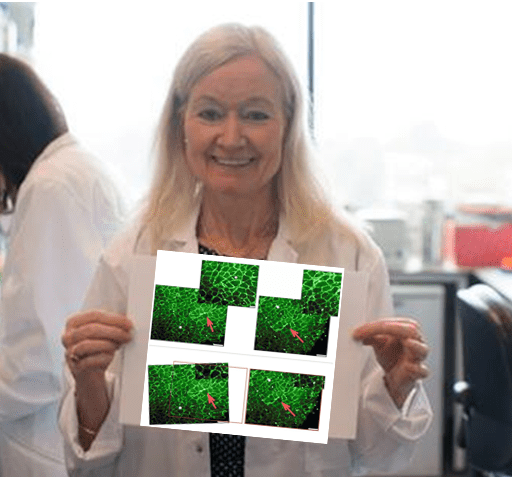
Update 11.03.2020
The registrar of University of Oxford, Gillian Aitken, pronounced to me that the PubPeer evidence bears no merit (highlights mine):
“Your complaint has been reviewed under the University’s Code of practice and procedure on academic integrity in research. I commissioned an examination of the issues raised in PubPeer by a senior scientist in the University, independent of Professor Davies, to inform my review of the matter. I asked for all the papers which had received comments on
PubPeer to be examined, including those which had been published more than three years ago, which I would not normally consider under the University’s Code of practice, and those where Professor Davies was not the corresponding author, but not the paper on which another Professor Davies was an author.On the basis of the advice received, I have decided that no further investigation is required, as there is no evidence of misconduct in research on the part of Professor Davies or other Oxford corresponding authors. In reaching that decision, I took into account the advice which I received on the papers.
I therefore consider this matter closed.”


Donate!
If you are interested to support my work, you can leave here a small tip of $5. Or several of small tips, just increase the amount as you like (2x=€10; 5x=€25). Your generous patronage of my journalism, however small it appears to you, will greatly help me with my legal costs.
€5.00

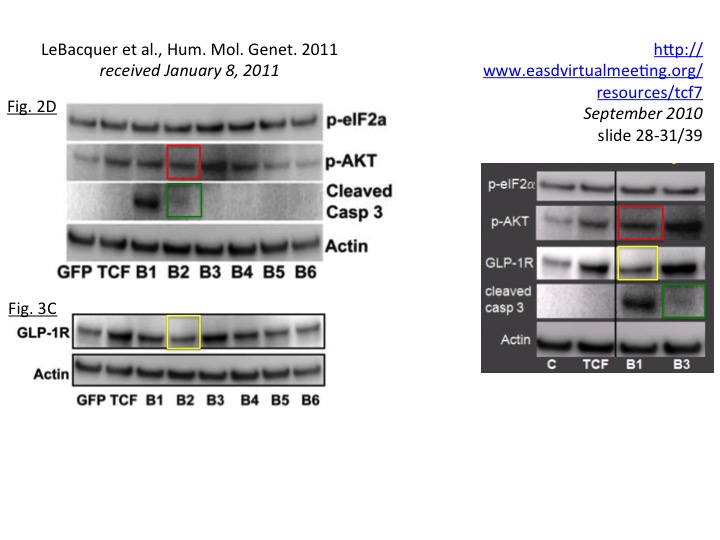
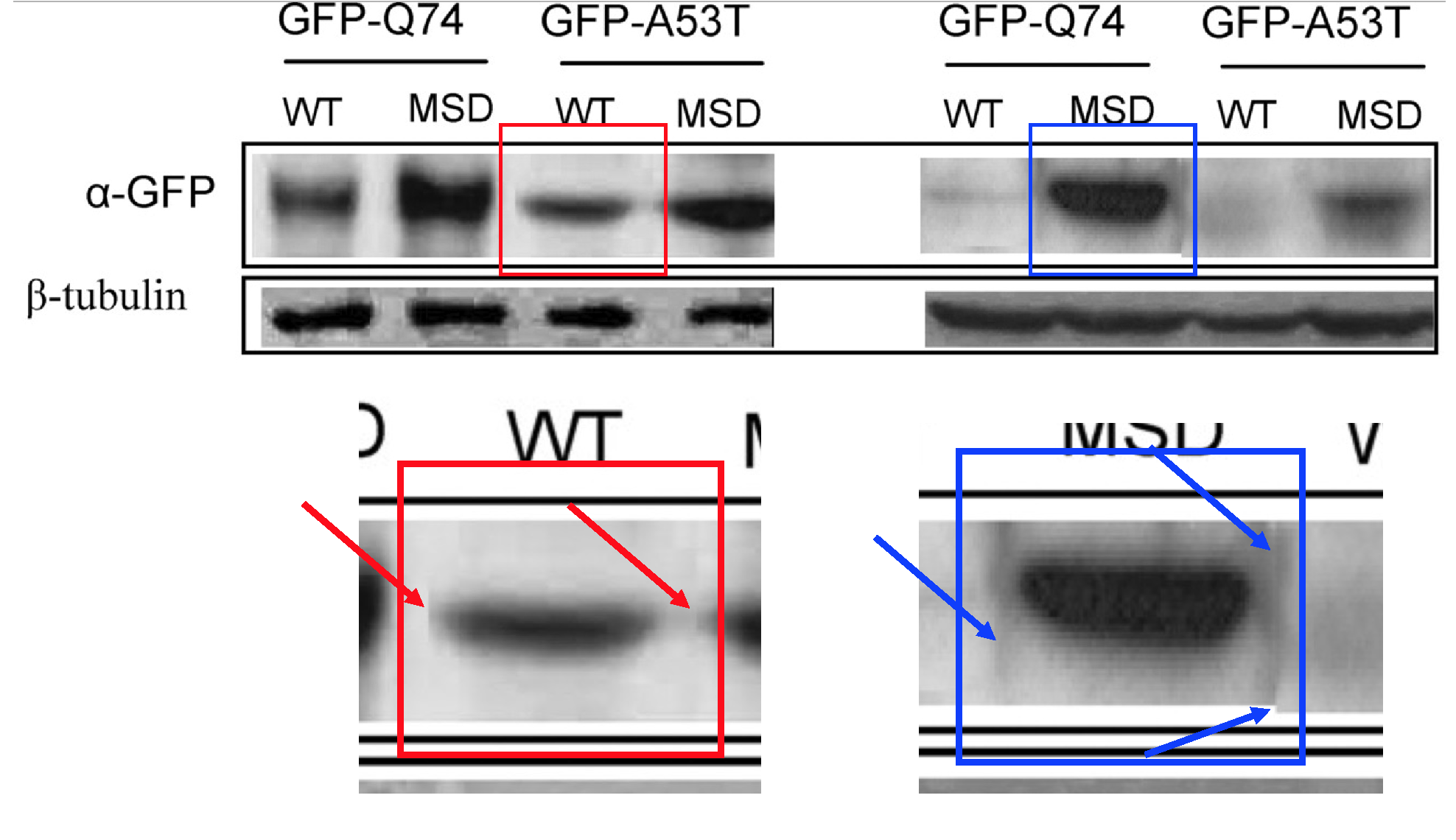
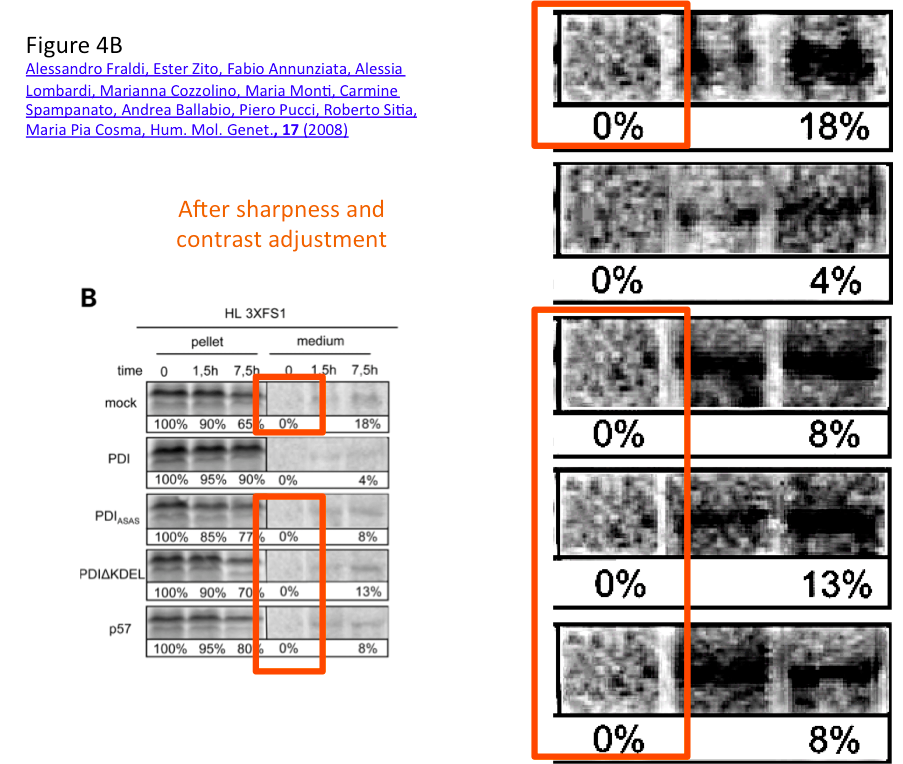

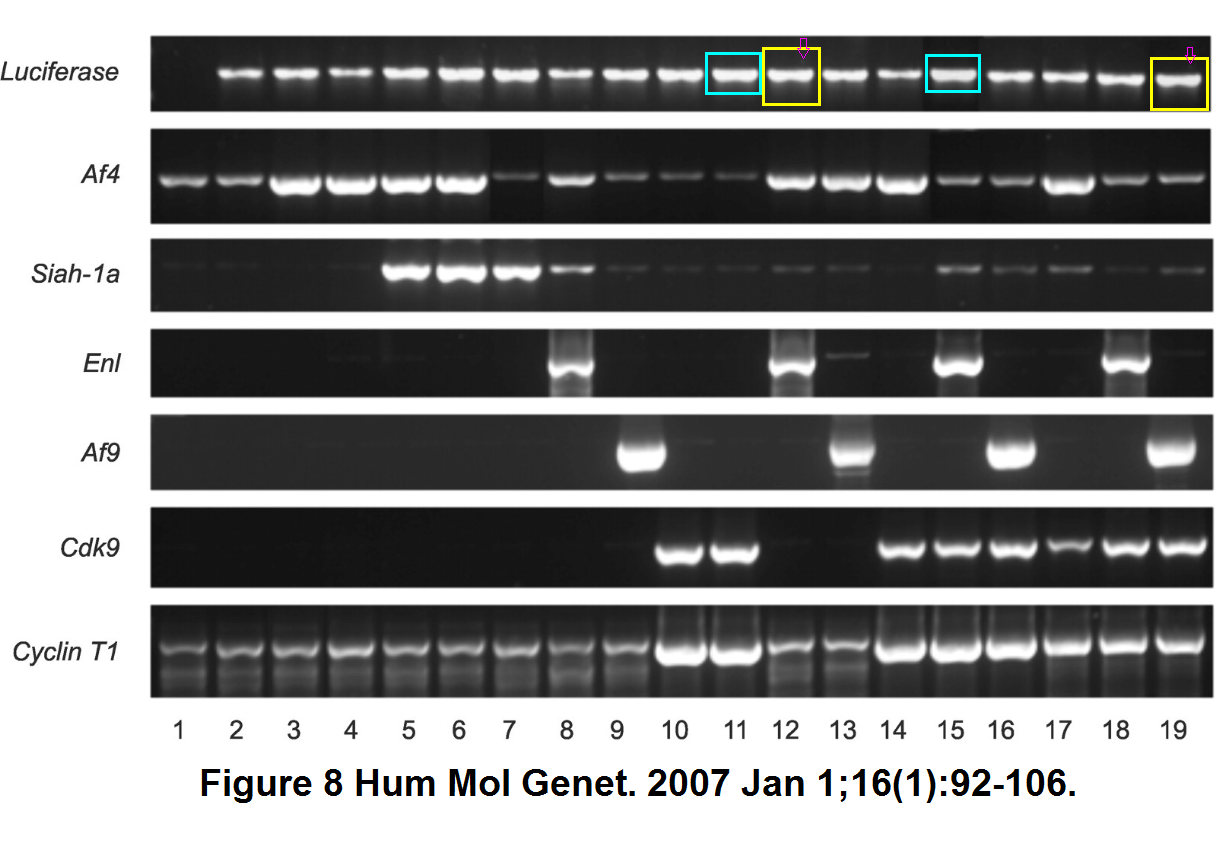
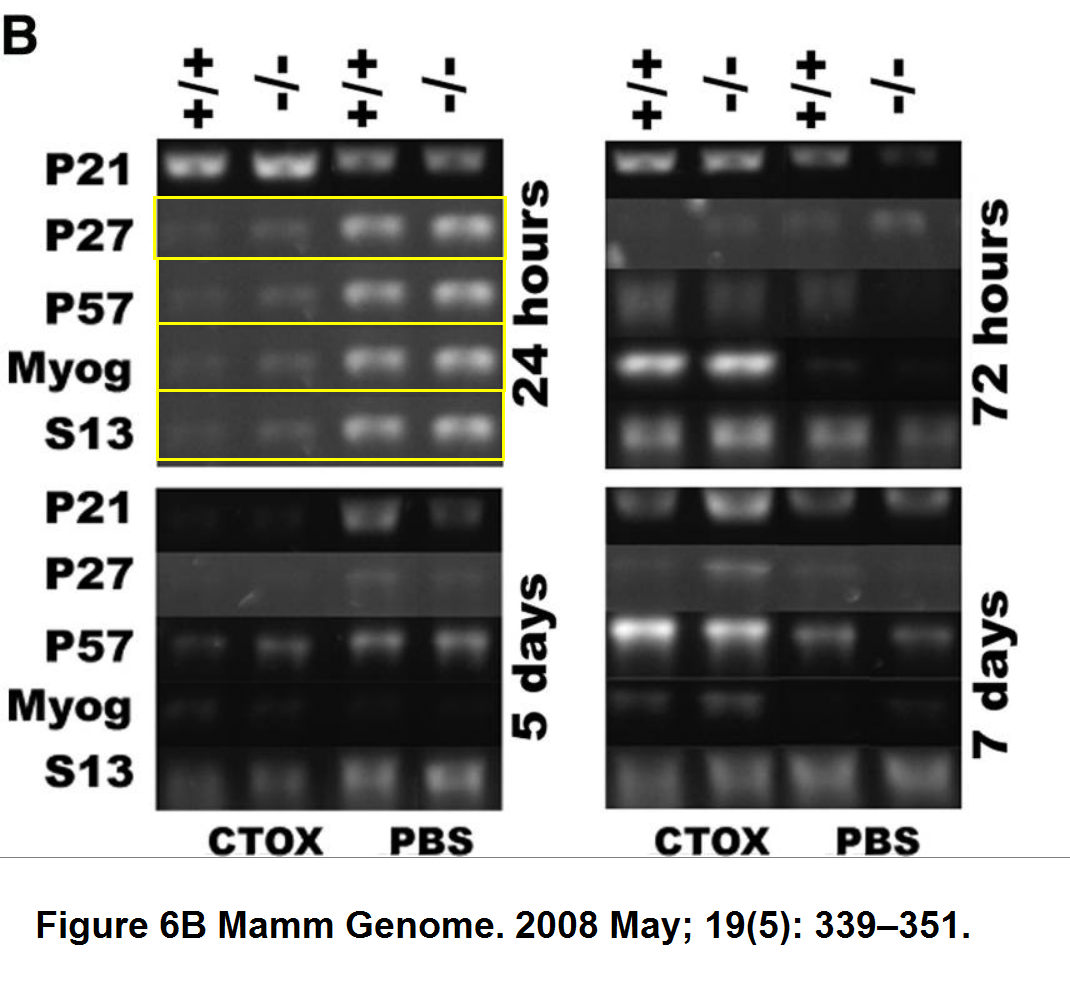
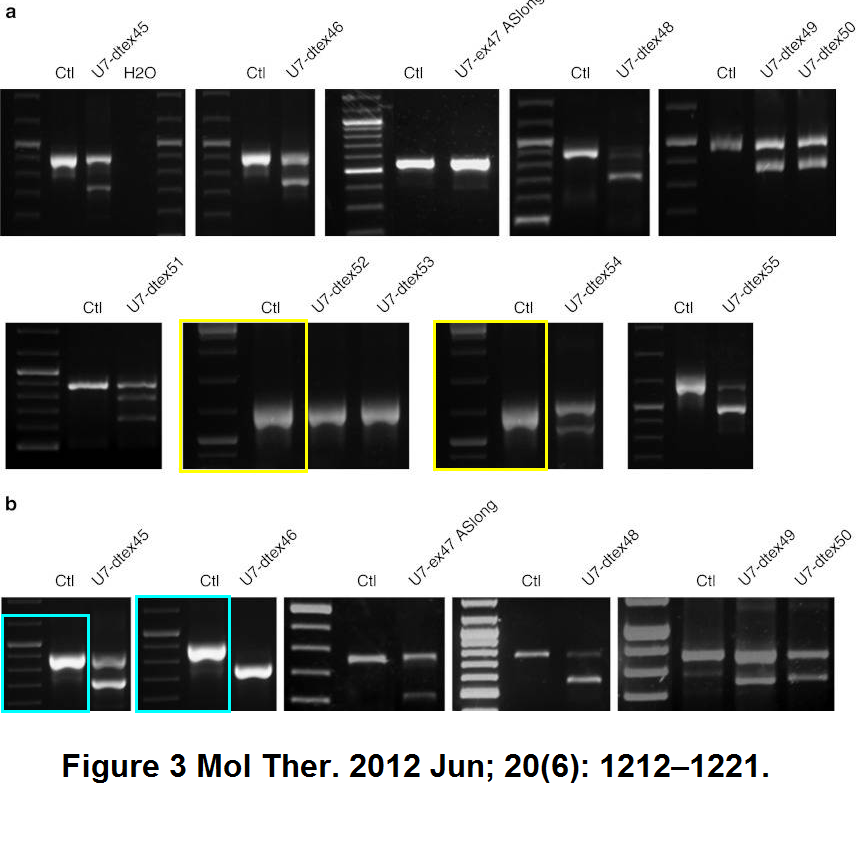

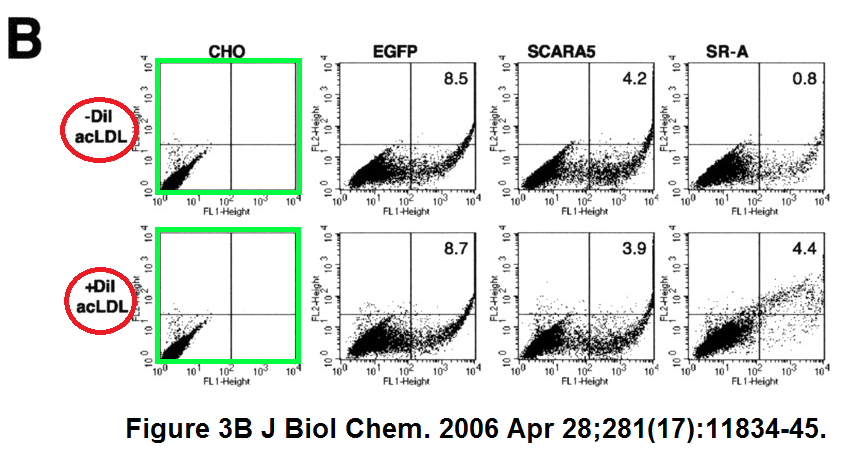

That the image was slightly rotated, cropped and possibly digitally retouched suggests that was not a mistake of oversight, but likely intentional data manipulation.
I don’t know. To my eyes, they’re clearly the same slice of stained tissue, but two photographs. It seems reasonable to take more than one microphotograph of a specimen, with the intention of choosing the best one.
Obviously if you do that, you should label the images clearly and file them so they do not end up as illustrations for ‘treated’ and ‘untreated’ conditions, but it is the sort of thing that I can imagine happening.
LikeLike
Good point, I agree those are probably two images of same microscopy section. Yet, even if you take 2 different images of same tissue section, they will be oriented same way. This is the way a microscope slide is loaded, it can be moved in x-y axes, the focus can be shifted in z-axis, but the image cannot be physically rotated. If the image is rotated, it happened digitally, on purpose.
LikeLike
I thought this was a plausible explanation too, after someone educated me on the details. Aside from deliberate misconduct, scientific publishing is also embarrassingly sloppy.
LikeLike
Another mistake! Spotted by Cheshire:
“the images for Utrophin and Merge may be reversed for the mdx-Fergie (cyan boxes) and mdx-Fiona (red) rows.”
And guess what? After years of not giving a flying toss, ignoring everything and everyone, Dame Kay herself went today to PubPeer to comment:
Meaning, she will be sending a new figure to herself. The journal is namely HMG.
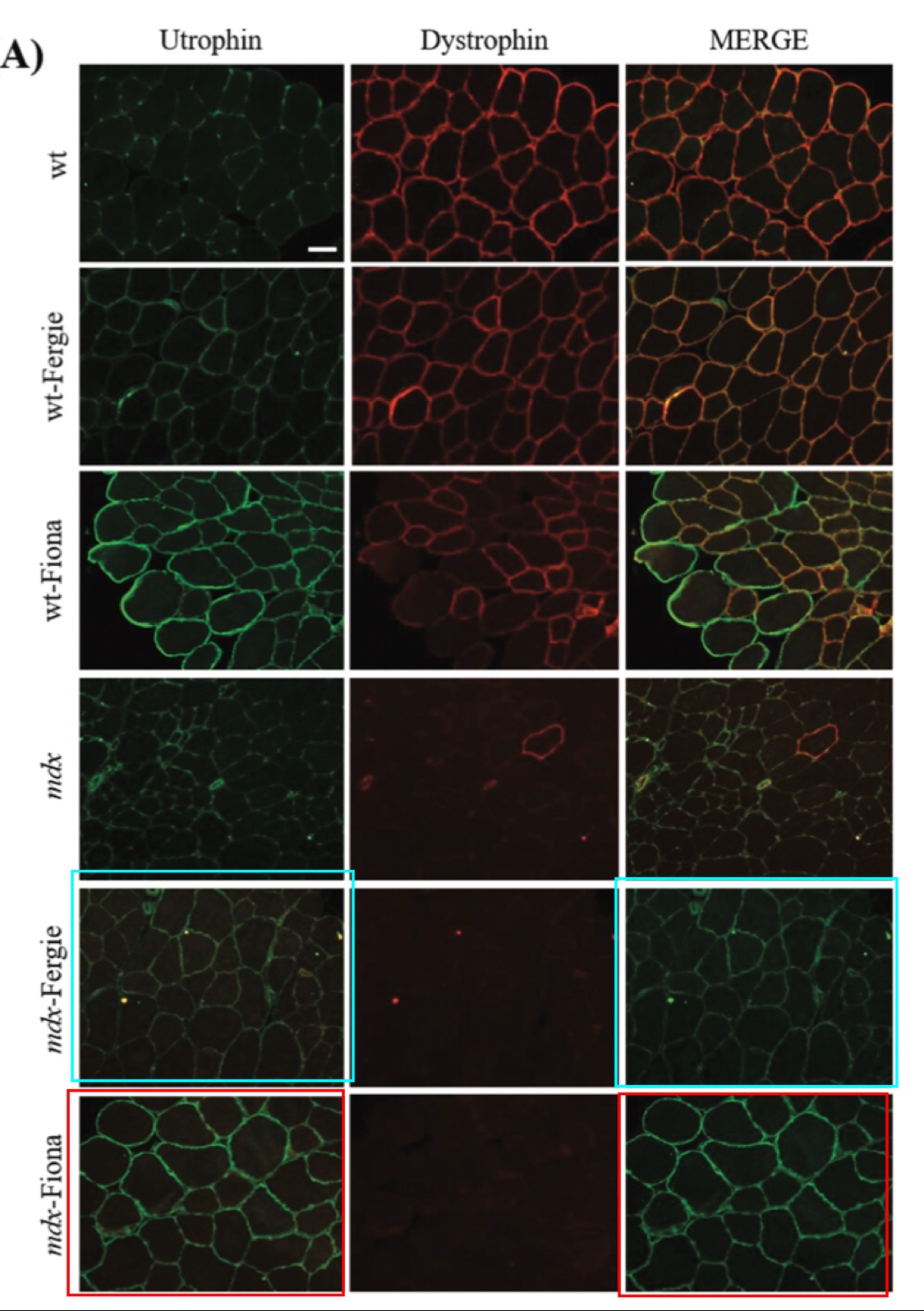
LikeLike
With this FRS dame, I think its the Croce effect is at play in her lab. Work for someone who is FRS ( I presume this would be like working for a National Academy of Science member in the USA) and you know all you have to do to get a good non-precariat job in science is publish a few times in a marquee journal, and bending the truth may be, or is often, necessary. This is going to be very tempting particularly if you have managed to escape some, er, “sh*t-hole” (idiot president expression) on a visa. I suspect the dame is too busy to look at papers carefully and trusts the people working for her.
Again, the problem is the scientific data generators have a crappy job compared to the managers of the scientific generators, and if they don’t get positive results, they are out on there asses and go back to the, er “sh*t hole”, or , if they become citizens of the queen, make pretty fused glass ornaments, or decorative pottery. What a fucked up system.
LikeLike
on my point of “… to make pretty fused glass ornaments, or decorative pottery” Escaping your dubious scientific career to do something more artistic I am going to forever call “the Stancheva maneuver.”
LikeLike
I’ve posted another possible concern on a Prof Davies paper on PubPeer: https://pubpeer.com/publications/7BB9225F6E513616DE12981C4A5F56
Possibly Smut Clyde or others can confirm that this is a concern and perform a more sophisticated image analysis. Hey, I do what I can.
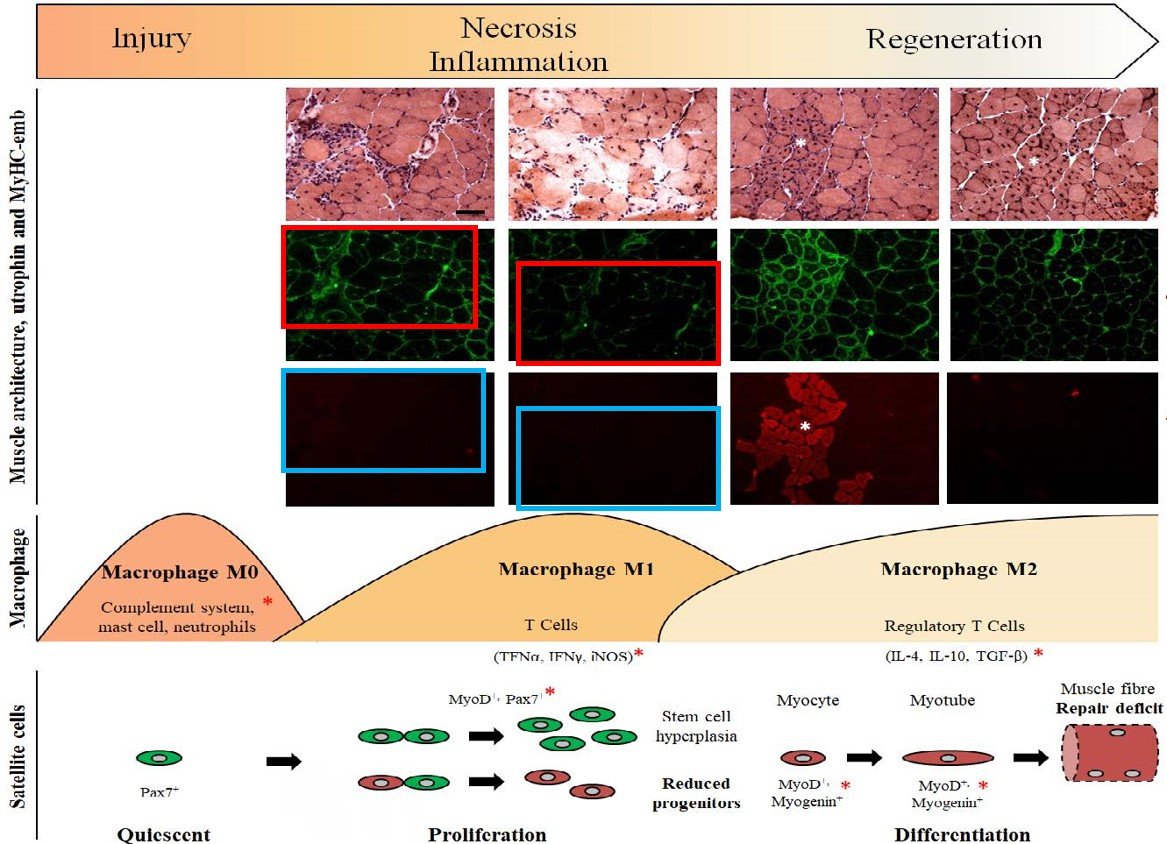
LikeLike
well, the images are most likely showing different conditions, since the H&E stainings above are so diverse.
Is it an innocent mistake of oversight? E.g. the image for the green utropin signal is identical in both copies, only shifted and brightness reduced. Can this happen by accident? Not likely. Rather, someone feels so safe and untouchable that this someone stopped caring and started trolling.
Also, here another case of EiC Kay Davies telling a whistleblower to get lost:
LikeLike
“Davies is also Editor-in-Chief of the journal Human Molecular Genetics (HMG), published by Oxford University Press.”
Human Molecular Genetics is of the highest possible standard.
The standard is so high that nothing is ever corrected.
Hum Mol Genet. 2000 Jul 22;9(12):1843-52.
Transplacental injection of somite-derived cells in mdx mouse embryos for the correction of dystrophin deficiency.
Torrente Y1, D’Angelo MG, Li Z, Del Bo R, Corti S, Mericskay M, DeLiso A, Fassati A, Paulin D, Comi GP, Scarlato G, Bresolin N.
Author information
1
IRCCS Ospedale Maggiore Policlinico, Milan, Italy.
https://pubpeer.com/publications/E6A3CA7A0BE840CBF7308779D97601
Figure 4.
LikeLike
beautiful. Did you notify the journal and did Dame Kay reply to you?
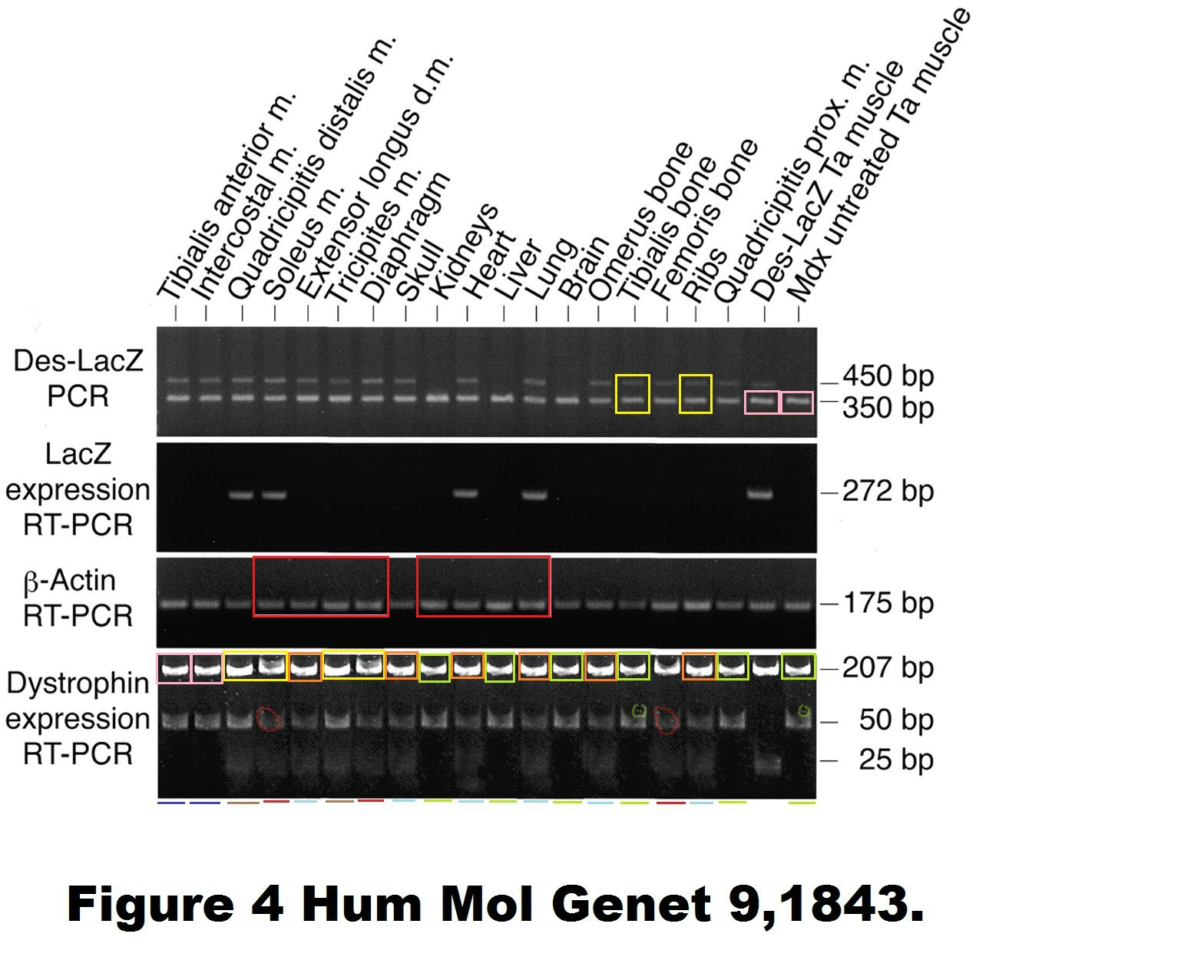
LikeLike
Cozy British practices.
Data shared between Genome Biol. 2005;6(12):R102 and Hum Mol Genet. 2005 Sep 15;14(18):2705-15.
Just because neither paper is an experiment (mapping is not an experiment since the first genetic map, there will, or will not be transcripts), is not a reason for shuffling the stamps.
Why do they need 2-for-1s?
1.Identification of novel Y chromosome encoded transcripts by testis transcriptome analysis of mice with deletions of the Y chromosome long arm.
Touré A, Clemente EJ, Ellis P, Mahadevaiah SK, Ojarikre OA, Ball PA, Reynard L, Loveland KL, Burgoyne PS, Affara NA.
Genome Biol. 2005;6(12):R102. Epub 2005 Dec 2.
PMID: 16356265
2019 correction. https://genomebiology.biomedcentral.com/articles/10.1186/s13059-019-1779-z
Deletions on mouse Yq lead to upregulation of multiple X- and Y-linked transcripts in spermatids.
Ellis PJ, Clemente EJ, Ball P, Touré A, Ferguson L, Turner JM, Loveland KL, Affara NA, Burgoyne PS.
Hum Mol Genet. 2005 Sep 15;14(18):2705-15. Epub 2005 Aug 8.
PMID: 16087683
https://pubpeer.com/publications/7F202C1F162FF72DF620CEC4934180
2019 correction
LikeLike
“Now you might think, well one rotten apple but surely we can trust the rest of British highest academic elites and the nation’s science leadership? It depends. Have you seen the PubPeer record of the Scientific Director of Cancer Research UK (CRUK), Karen Vousden?”
Paleochemisty (Why not? Enough university departments study history and ancient civilizations).
Mol Cell Biol. 1999 Mar;19(3):1751-8.
Regulation of p53 function and stability by phosphorylation.
Ashcroft M1, Kubbutat MH, Vousden KH.
Author information
1
ABL Basic Research Program, NCI-FCRDC, Frederick, Maryland, USA.
https://www.crick.ac.uk/research/find-a-researcher/karen-vousden
“Karen received her BSc and Ph.D. in Genetics from Queen Mary College at the University of London working with Lorna Casselton, followed by postdoctoral fellowships with Chris Marshall at the Institute of Cancer Research in London and Douglas Lowy at the National Cancer Institute in the USA.”
https://pubpeer.com/publications/B518680DD43B568C9DA7F41F9BBE54
Figure 7.
LikeLike
Some more paleochemistry.
Oncogene. 1998 Oct 1;17(13):1691-703.
Cell cycle arrest and DNA endoreduplication following p21Waf1/Cip1 expression.
Bates S1, Ryan KM, Phillips AC, Vousden KH.
Author information
1
ABL Basic Research Program, NCI-FCRDC, Frederick, Maryland 21702-1201, USA.
3 years and counting.
https://pubpeer.com/publications/A0F7A3FFD9F1D6D44D149007691B32
Figure 1.
LikeLike
Genes Dev. 1997 Jul 15;11(14):1853-63.
Induction of DNA synthesis and apoptosis are separable functions of E2F-1.
Phillips AC1, Bates S, Ryan KM, Helin K, Vousden KH.
Author information
1
ABL Basic Research Program, National Cancer Institute-Frederick Cancer Research and Development Center (NCI-FCRDC), Maryland 21702, USA.
Outliers eerily similar.
Figure 3C.
LikeLike
Figure 7B Mol Cell Biol. 1999 Mar;19(3):1751-8.
More comes to light.
Much more similar than you expect.
First author presently.
https://crukcambridgecentre.org.uk/users/mashcroft5402
Professor Margaret Ashcroft
University of Cambridge
University departments:
Department of Medicine
Key publications:
“Ashcroft M, Kubbutat MHG, Vousden KH. (1999a) Regulation of p53 function and stability by phosphorylation. Mol Cell Biol 19(3): 1751-8.”
LikeLike
Cell Growth Differ. 1999 Feb;10(2):87-92.
Analysis of the degradation function of Mdm2.
Kubbutat MH1, Ludwig RL, Levine AJ, Vousden KH.
Author information
1
ABL Basic Research Program, National Cancer Institute-Frederick Cancer Research and Development Center, Frederick, Maryland 21702-1201, USA.
Figure 1B.
LikeLike
At one time Pubpeer used to let you see the papers which had been commented on by journal.
Using this webpage staff of journals can request the “dashboard” for their journal.
https://pubpeer.com/journals (bottom left corner main webpage).
“PubPeer Journal Dashboards are built to give Journals specialized tools to keep track of and address comments on their articles. We provide a centralized dashboard with specialized search features and email alerts for everyone on your team.”
Pressing “REQUEST INVITATION NOW” lets the journal staff find their journal
E.g. Human Molecular Genetics (66)
On pressing Human Molecular Genetics the member of staff, Dame Kay Davies even,
will see:
“Currently PubPeer Dashboards are provided for journal administrators. If you work for the Human Molecular Genetics you can request an invitation to your dashboard by providing the information below:
[Information required]
Email address at Human Molecular Genetics
Then press “request invitation”.
It’s that simple for staff members.
Something Dame Kay Davies should consider doing.
LikeLike
Long time British editor Mol Cell Biol, Roger Davis stands behind 6 year rule to shield British paper from retraction, yet retracted a 2003 Spanish paper in 2017.
https://www.ncbi.nlm.nih.gov/pmc/articles/PMC5440648/
His Holiness is on record:
“we pursue allegations of publishing misconduct made within 6 years of publication in an ASM journal but will not comment on allegations made on public websites or through social media.”
Surely Mol Cell Biol is a public website?
2003 Spanish paper retracted in 2017.
https://pubpeer.com/publications/4737062638FE89F825E20117DEAEAA
1999 British paper.
https://pubpeer.com/publications/80B993ECD687945AA6EB3F996AA084
Mol Cell Biol. 1999 Sep;19(9):6427-40.
Functional analysis of H-Ryk, an atypical member of the receptor tyrosine kinase family.
Katso RM1, Russell RB, Ganesan TS.
Author information
1
Molecular Oncology Laboratories, Imperial Cancer Research Fund, Institute of Molecular Medicine, John Radcliffe Hospital, Headington, Oxford OX3 9DS, United Kingdom.
Figure 2B.
Figure 6.
LikeLike
Here’s a nice fresh peach from MCB:
https://pubpeer.com/publications/8E60C6DE7FA9B47A7A9E0D78895FC8#9
To think I used to publish in there back in the day.
LikeLike
One of the things I find entertaining is a picture of the PI/advisor with a lab coat on (above), which is just a pose for some reason (usually some newspaper story). Chances are nearly 100% they have not stepped in an actual lab in decades, much less do a complete and interpretable experiment.
Keeping advisors out of the lab is good and bad. Good because they have not been in the lab for years and most wouldn’t know how to do an experiment efficiently, bad in that it keeps them even more out-of-touch as to what is actually going on in terms of data generation.
Is it any wonder why I think advisors are almost completely useless except maybe to get a grant?
LikeLike
Today:
Dame Davies responds to the 2018 Molecular Therapy paper on PubPeer, “The highlighted images originate from different mice. The very similar patterns of muscle fibres highlighted must therefore have arisen by chance.“
https://pubpeer.com/publications/810F30FE8E08713ADAEC6B9BC1650F#4
LikeLike
https://mobile.twitter.com/Thatsregrettab1/status/1225900888641822720
LikeLike
Pingback: Bologna mice guilty of research misconduct – For Better Science
Pingback: Bologna cover-up at Oxford University Press – For Better Science
Pingback: Amato Giaccia: too big to fall – For Better Science
Pingback: Münster charges Jens Schwamborn’s mentor Andreas Püschel with research misconduct, again – For Better Science
Pingback: The Ballad of Claudio Hetz – For Better Science
Pingback: Victims as perpetrators – For Better Science
Pingback: The English science supremacy – For Better Science
New business for Dame Kay!
https://finance.yahoo.com/news/oxford-biomedica-plc-board-changes-120000608.html?guccounter=1
“Oxford, UK – 3 February, 2021: Oxford Biomedica plc (LSE:OXB) (“Oxford Biomedica” or “the Group”), a leading gene and cell therapy group, today announces two changes to the Group’s Board of Directors.
Professor Dame Kay Davies will be joining the Board as a Non-Executive Director, effective 1 March 2021. Professor Davies is a world-leading human geneticist with a research focus on the molecular analysis of neuromuscular and neurological disease, particularly Duchenne muscular dystrophy (DMD). She has published more than 400 papers and pioneered approaches to the therapy of DMD. She is currently Professor of Genetics and Co-Director (and Founder Member) of MDUK Oxford Neuromuscular Centre at the University of Oxford.
Professor Davies has significant experience sitting on the Boards of both public and private companies and charities. She was co-founder of Summit Therapeutics plc and Oxstem Limited, both of which are spinouts from her research activities, and she also sits on the Board of UCB S.A. and The Biotech Growth Trust plc. She was appointed a governor of the Wellcome Trust in 2008 and was Deputy Chairman between 2013 and 2017.”
LikeLike
Pingback: How Sampaolesi and Cossu cured Muscular Dystrophy with stem cells – For Better Science